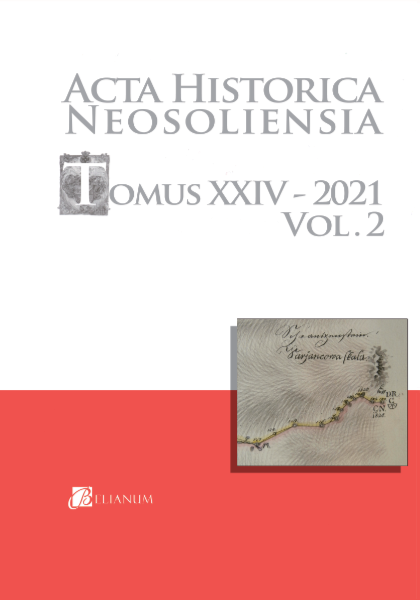Nové možnosti prístupu k výskumu dejín vojvodstva v 11. storočí
DÁNIEL BAGI
Katedra dejín východnej a strednej Európy,
Inštitút histórie, Filozofická fakulta, Univerzita Loránda Eötvösa,
Budapešť
New possibilities of approach to research the history of the duchy in the 11th century
Abstract: The study presents previous research on the history of the duchy in Hungarian, Czechoslovak (Czech) and Polish historiography as well. It also represents a new research concept. The Arpads‘ system of power division in the 11th century cannot be considered either as a model of state development or as a mere exercise of dynastic inheritance or family law. Instead of research on the state development, it is more appropriate to proceed from the then understanding of law and the organization of society, contained primarily in narrative sources and then situate the history of the duchy into it. The basis of this order had been represented by the system of relations between free people, based on a friendship confirmed by an oath. We can assume that these interpersonal relations had also determined the competence of the duchy and dukes. When comparing the Arpad dynasty duchy with similar constitutions of the Piast and Přemyslid dynasties, we can state that the territorial power division does not necessarily correspond to the authority/competent one. We still do not know the exact territorial extent of the duchy in the Kingdom of Hungary. However, we can say with certainty that its centers, unlike the Piast ones, had only slightly affected the main royal residences. While good relations had been lasting in the ruling dynasty, the dukes had important competencies. These competencies meant a share in the royal power, so the agreement had primarily represented the division of competencies. This might explain why kings and dukes regularly appear together in the main positions of the country, together representing the ruling power. The model of the power division between the Arpads in the 11th century was thus primarily family-based. It was based on consensus among family members. According to this consensus, the power division affecting the whole country had been in the ratio 2 : 1. The sources do not mention exactly what the members of the ruling family had divided among themselves. We can suppose that the reason was because it was not necessary, since the Hungarian chronicler understood the term divisio regni in the meaning of the disputes over the throne, as well as the power division.
Keywords: royal duchy, the Árpád dynasty, the Kingdom of Hungary, power division.
Archív
Úplné textové verzie vo formáte PDF
- Acta historica Neosoliensia - Tomus 26, num. 1
- Acta historica Neosoliensia - Tomus 25, num. 2
- Acta historica Neosoliensia - Tomus 25, num. 1
- Acta historica Neosoliensia - Tomus 24, num. 2
- Acta historica Neosoliensia - Tomus 24, num. 1
- Acta historica Neosoliensia - Tomus 23, num. 2
- Acta historica Neosoliensia - Tomus 23, num. 1
- Acta historica Neosoliensia - Tomus 22, num. 2
- Acta historica Neosoliensia - Tomus 22, num. 1
- Acta historica Neosoliensia - Tomus 21, num. 2
- Acta historica Neosoliensia - Tomus 21, num. 1
- Acta historica Neosoliensia - Tomus 20, num. 2
- Acta historica Neosoliensia - Tomus 20, num. 1
- Acta historica Neosoliensia - Tomus 19, num. 2
- Acta historica Neosoliensia - Tomus 19, num. 1
- Acta historica Neosoliensia - Tomus 18
- Acta historica Neosoliensia - Tomus 17
- Acta historica Neosoliensia - Tomus 16
- Acta historica Neosoliensia - Tomus 15
- Acta historica Neosoliensia - Tomus 14
- Acta historica Neosoliensia - Tomus 13
- Acta historica Neosoliensia - Tomus 12
- Acta historica Neosoliensia - Tomus 11
- Acta historica Neosoliensia - Tomus 10
- Acta historica Neosoliensia - Tomus 09
- Acta historica Neosoliensia - Tomus 08
- Acta historica Neosoliensia - Tomus 07
- Acta historica Neosoliensia - Tomus 06
- Acta historica Neosoliensia - Tomus 05
- Acta historica Neosoliensia - Tomus 04
- Acta historica Neosoliensia - Tomus 03
- Acta historica Neosoliensia - Tomus 02
- Acta historica Neosoliensia - Tomus 01

